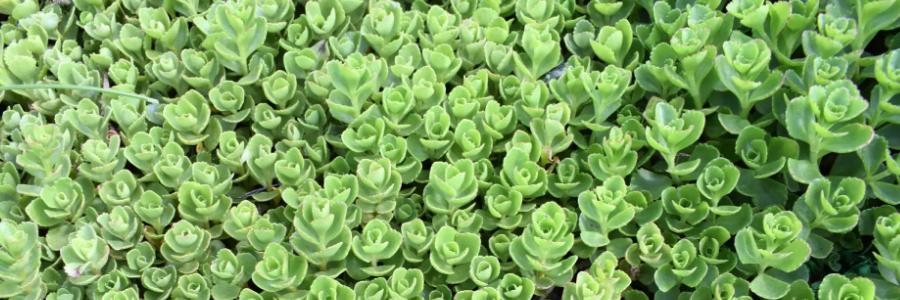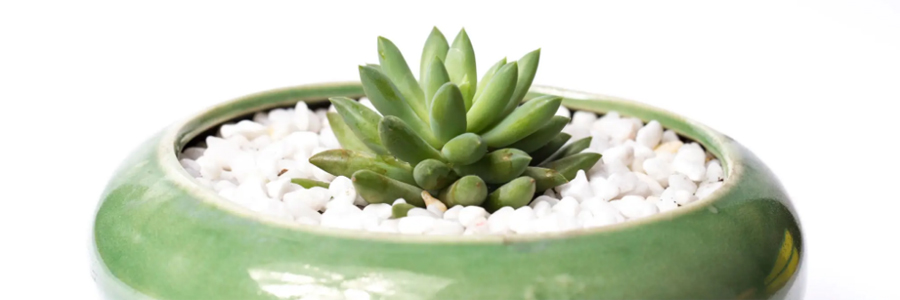Sedum
Taxonomic Classification
The Sedum genus belongs to the family Crassulaceae. It is a large and diverse genus, with over 400 species of succulent plants. The name “Sedum” is derived from the Latin word “sedare”, which means to soothe or calm, perhaps referring to the traditional use of some Sedum species in herbal medicine. Sedum plants are native to various regions around the world, including North America, Europe, Asia, and Africa. They have adapted to a wide range of habitats, from mountainous areas to deserts and from sunny, exposed locations to shaded forests.
Morphological Characteristics
1.Leaf Structure
Sedum plants exhibit a great variety of leaf shapes and arrangements. The leaves are typically thick and succulent, adapted for water storage. They can be linear, lance – shaped, oval, or round. In some species, like Sedum morganianum (Burro’s Tail), the leaves are long, cylindrical, and bead – like, hanging in long, trailing strands. In Sedum album (White Stonecrop), the leaves are small, round, and form tight rosettes. The leaves may be arranged in opposite pairs, in whorls, or in a spiral pattern along the stem.
2.Stem and Growth Habit
The stems of Sedum can be either herbaceous or somewhat woody in some species. Some Sedum plants have an upright growth habit, such as Sedum spectabile (Showy Stonecrop), which forms clumps of erect stems with large, flat – topped flower clusters. Others, like Sedum acre (Goldmoss Stonecrop), have a low – growing, creeping or mat – forming habit, spreading horizontally along the ground. As the plants grow, they may produce offsets or new growth from the base or along the stems, which can contribute to their spread and formation of colonies.
3.Flowering Characteristics
Sedum plants produce small, star – shaped flowers. The flowers are usually grouped in clusters, which can be terminal (at the end of the stem) or axillary (arising from the leaf axils). The flower colors vary widely among species, including white, yellow, pink, red, and purple. For example, Sedum spectabile produces large, pink flower clusters in late summer to early fall, while Sedum acre has bright yellow flowers that bloom in spring. The flowers are often attractive to pollinators such as bees, butterflies, and other insects.

Common Varieties
1.Sedum morganianum
Also known as Burro’s Tail, Sedum morganianum has long, trailing stems covered in plump, bead – like leaves. The leaves are usually blue – green and can develop a red or purple tinge when exposed to bright light. It is a popular hanging plant, often used in hanging baskets or as a trailing element in succulent arrangements. It produces small, star – shaped, pinkish – red flowers in summer.
2.Sedum album
White Stonecrop, Sedum album, forms low – growing mats of small, round – shaped leaves. The leaves are green, often with a hint of red or purple at the edges. It produces clusters of small, white flowers in late spring to early summer. It is a hardy plant that can tolerate a wide range of conditions and is commonly used in rock gardens, as ground cover, or in containers.
3.Sedum spectabile
Showy Stonecrop, Sedum spectabile, has upright stems and forms large, flat – topped clusters of pink or purple flowers in late summer to early fall. The leaves are oval – shaped and green. It is a relatively large – growing Sedum, reaching up to 30 – 60 centimeters in height. It is a popular choice for border plantings in gardens and for adding a splash of color in late – season landscapes.
4.Sedum acre
Goldmoss Stonecrop, Sedum acre, has small, yellow – green, needle – like leaves that form dense mats. It produces bright yellow, star – shaped flowers in spring. It is a low – maintenance plant that can tolerate poor soil conditions and is often used in rock gardens, on walls, or as a ground cover in sunny areas.
5.Sedum rupestre
Stonecrop, Sedum rupestre, has thick, succulent leaves that are often gray – green. The leaves are arranged in a rosette pattern at the end of short stems. It produces clusters of small, yellow flowers in summer. It is a drought – tolerant plant that is well – suited for rock gardens and xeriscapes.

